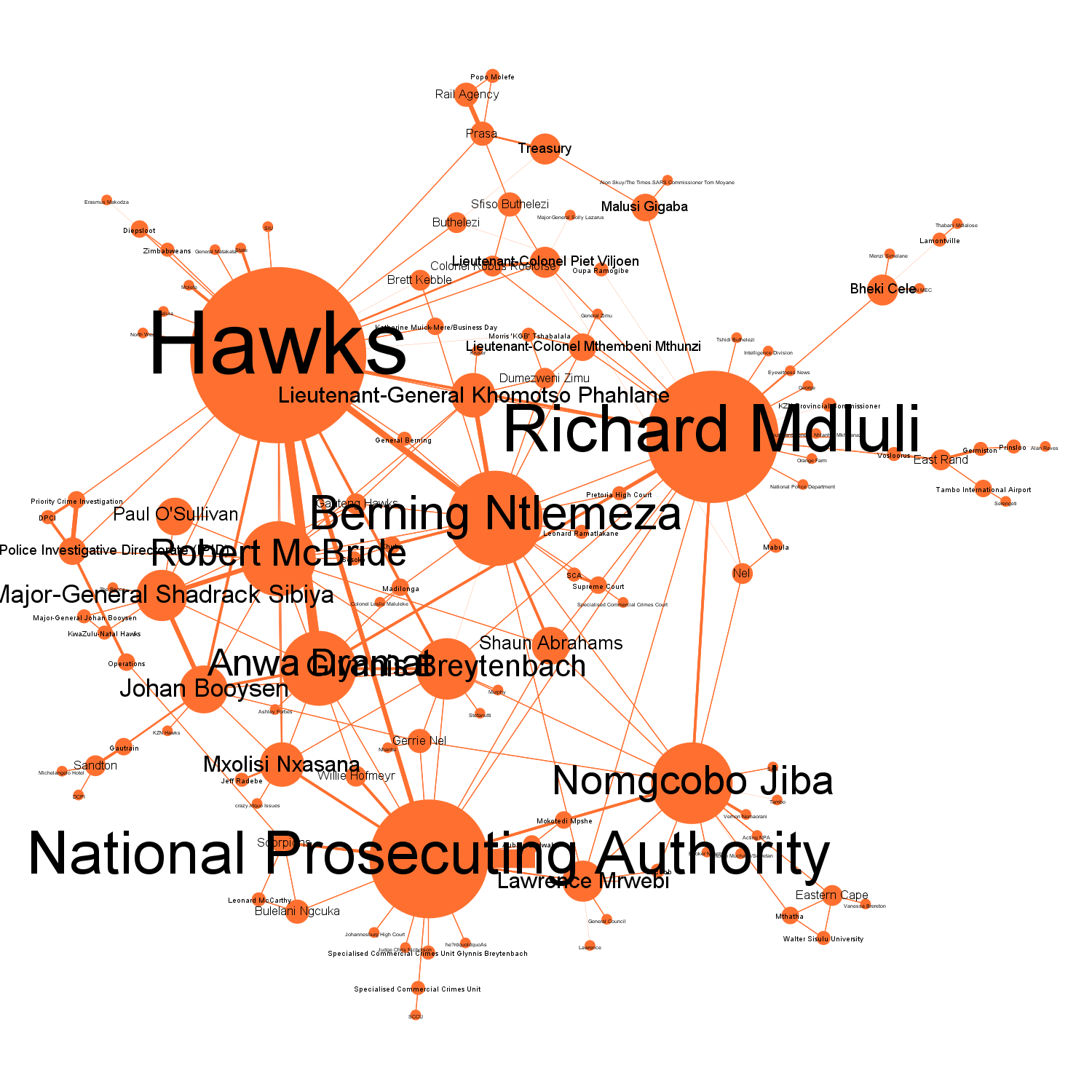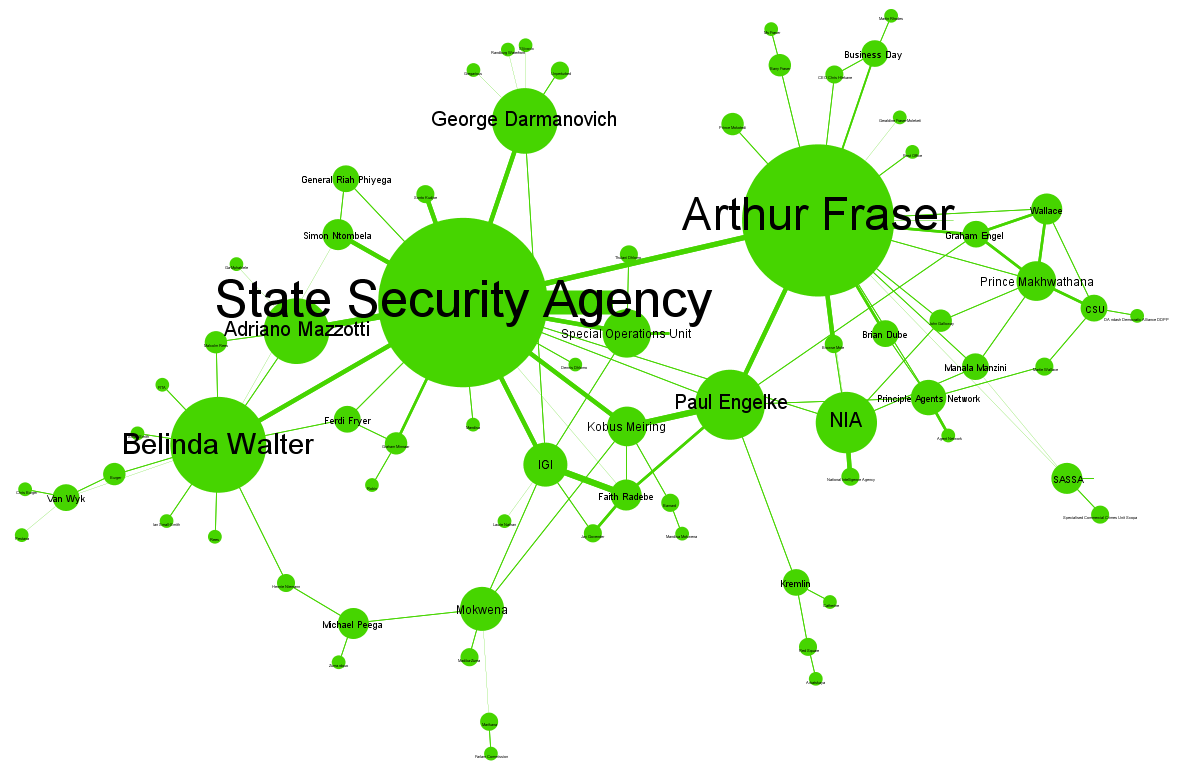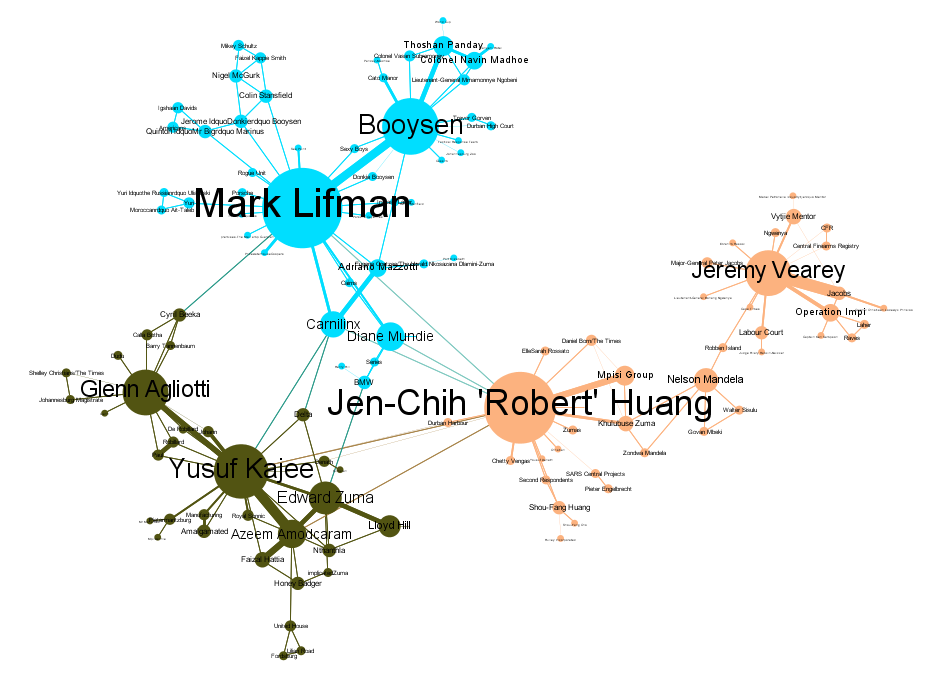
Like many South Africans, a copy of, Jacques Pauw’s, sensational exposé, “The President’s Keepers“, found its way unbidden onto my phone towards the end of 2017. The book details former-president Jacob Zuma’s corrupt shadow state. Just a week after its release, the State Security Agency (SSA) threatened to have it pulled from stores, prompting concerned citizens to share PDF copies of the book via Whatsapp, which is how it found its way onto my phone and those of many other South Africans. I chose not to read the book at the time though thinking I would pick up a legal copy at some later point. As it turned out, I received a hard copy of the book for Christmas and I was unable to put it down. I devoured it over my end of year break. The tale of brazen thuggery and thievery described in the book left me equal parts seething with fury for the way in which the wealth of our country has been plundered at the expense of our countrymen and women, and spell-bound at the intricate web of patronage and strategic criminal maneuvering involved. The sheer cynicism of the power brokerage at play was a real eye-opener that read like a spy novel. That it described real events blew my mind.
As with former Public Protector, Thuli Madonsela’s “State of Capture” report which Thembani Phaweni and I collaborated on visualising here, I wanted to share the events detailed in the book with as many South Africans to ensure that they don’t happen again. To do so, I made use of Thembani Phaweni’s excellent tool, TextNet, to visualise the text and I present the results in this article.
This article should be read as a companion piece to our article on Madonsela’s report above. While that report dealt with state capture and corruption mainly within our state-owned enterprises (Eskom, PRASA, etc.), this article deals with the government institutions specifically tasked with oversight and criminal investigations. In order to facilitate the looting in state-owned entities, state capturers needed to act with impunity which meant the defanging of such oversight and investigative functions. Thus we begin to understand the scale and meticulous planning involved in the State Capture Project.
New president, Cyril Ramaphosa, is on a mission to clean up the South African government. The book gives us an extensive list of those involved in state capture and, as Ramaphosa goes about cleaning up government, this list gives us an indication of who should fall.
From the written word to data
Let’s start by taking a look at the overall network of people, places and organisations discussed in the book. This network is created by using text mining techniques that isolate the entities (people, places and organisations) mentioned in the text. Entities are then connected to each other if they appear within five words of each other in the text. So, what we’re really looking at here is a summary of the entities that were discussed together. This means the good and bad are connected together; the investigators are connected to the criminals; the corrupt are connected to each other; and so on. This is a very important point to internalize: many people are mentioned in the book, both good and bad. Their name appearing in this network does not say anything about their actions. You’ll have to read the book to get the full details of their activities, which I highly recommend doing (you won’t know whether to laugh at the brazenness of it all or smash a wall in anger at how a few brought our country to its knees).
Finally, the size of each node in the network below represents how often that entity was mentioned in the book. And, once we have the network of entities connected to each other, we can run a community detection algorithm over the network to identify distinct clusters, groups or cliques that are tightly knitted together (represented by different colours). In this way, we see the main players in SARS, the SSA and so on.
Here then is the overall network for your perusal. Think of this as a visual summary of the book:

The above network is pretty detailed so below is a high-level summary of the main groups discussed in the book, including our country’s tax collector, The South African Revenue Service (SARS), our law-and-order functions (The Hawks & the NPA), our intelligence service (the SSA), major underworld figures, and, of course, our former president, his family, his lieutenants and the Gupta brothers:

Jacob Zuma, the Guptas and SARS
I’m not going to go into the contents of the book in great detail because I really do urge you to read it. I will take a brief dive into the main communities involved though, starting with the largest one which involves Jacob Zuma, the ANC, the Guptas and SARS. One could probably separate this into two sub-communities: the Zuma-Gupta network and the SARS network. Much has been said about the Zuma-Gupta network (the Gupta Leaks website is a good place to start) but the specifics of what went down in SARS are less well-known.
What stands out in this community is the prominence of Johann van Loggerenberg. The book paints him as a true South African patriot and hero. His dogged determination and unwavering ethics as a specialised SARS investigator focused on tackling criminal syndicates and corruption allowed much of what transpired at SARS under the watch of Tom Moyane and even before to come to light. We really owe him a debt of gratitude.

The Hawks and the NPA
Another major focus of the book is the way in which our key law enforcement functions were undermined by major players such as former head of the Police Crime Intelligence Unit and a key Zuma lieutenant, Richard Mdluli; former Hawks boss, Berning Ntlemeza; current NPA head, Shaun Abrahams; and disgraced senior NPA officials, Nomcobo Jiba & Lawrence Mwrebi, amongst others, in order to facilitate the looting of state-owned enterprises while protecting Zuma and his associates from investigation and prosecution.
Worth a mention just for the outlandish, “you can’t make this shit up” nature of his story is Captain Morris “KGB” Tshabalala. Tshabalala is a convicted criminal who nonetheless somehow managed to rejoin the police after going to jail, only to take up the role of a spook who did things like use a R50 million slush fund to allegedly buy votes at the 2012 ANC National Elective Conference in Manguang . Tshabalala was finally fired after Cyril Ramaphosa took over the presidency earlier this year.
The book pits this nefarious group of state capturers against the patriotic, ethically-minded South Africans who stood in their way; some of whom who could not be bought and others who did have their price. These players included Mxolisi Nxasana (former head of the NPA who left after receiving a problematic R17 million golden handshake), former Hawks boss, Anwar Dramat (who also eventually threw in the towel in the face of the state capture onslaught), former NPA prosecutor and now DA parliamentarian, Glynnis Breytenbach, former head of the Hawks in KZN, Johan Booysen (who was unlawfully suspended) and suspended head of IPID (Independent Police Investigative Directorate), Robert McBride (although he has a pretty complex/chequered past).

The State Security Agency (SSA)
Pauw also spends a lot of time talking about South Africa’s intelligence service, the State Security Agency (SSA). Arthur Fraser gets a lot of airtime for authorising the creation of a “Principle Agent Network” which effectively acted as a parallel security agency beholden only to Zuma and his lieutenants (see the Daily Maverick’s great series on this network’s shadow activities starting here). Fraser demanded a retraction from Pauw while Scorpio has shown that, in addition to the allegations in Pauw’s book, Fraser also benefited from a corrupt tender at PRASA. Indeed, some commentators believe the SSA is irreparably rotten and needs to be rebuilt from scratch.
Also of interest is cigarette smuggler, Adriano Mazzotti, who was famously photographed with Nkosazana Dlamini-Zuma in the run up to the 2017 ANC National Elective Conference. Mazzotti is believed to have been one of Dlamini-Zuma’s campaign backers. He also previously backed Economic Freedom Fighters (EFF) leader, Julius Malema.

The criminal underworld
The final community worth highlighting is actually made up of three semi-distinct communities, each centring around well-known underworld figures.
Mark Lifman is currently making headlines due to his alleged role in an ongoing gang turf wars in Cape Town. He was recently arrested and this blog post details what Pauw’s book has to say about him. It’s complicated but basically SARS was investigating his empire and Lifman appears to have called in some favours from Zuma to get them off his back.
Yusuf Kajee is also in the illicit cigarette trade and was under scrutiny from SARS investigative unit. Kajee’s business partner just happens to be Jacob Zuma’s son, Edward Zuma.
Convicted criminal Glenn Agliotti had close ties to power and seems to appear in every tale of the shadowy dealings in this country.
Robert Huang is another underworld player that was under investigation by SARS. Huang’s owed the country over a billion Rand according to SARS, which was the largest such tax investigation in that organisation’s history. Once again, we find the Zuma family disconcertingly close to major underworld figures. In this case, Jacob Zuma’s nephew, Khulubuse Zuma, is a former business partner of Huang’s. This was just another possible reason why effective SARS leadership and investigative functions needed to be undermined. You can read an extract from the book about Huang here and some more of Huang’s dealings here.

And thus our brief tour of Jacques Pauw’s “The President’s Keepers” comes to an end. I don’t think we can under-estimate the importance of this book. Pauw published new evidence of the scale of the state capture project and helped connect the dots in new ways for many ordinary South Africans, including those in a position to do something about it. I wonder if we would be where we are today in a post-2017 ANC NEC world where Cyril Ramaphosa was elected ANC president (paving his way to become president of the country) if Pauw’s eleventh hour contribution hadn’t given decision makers new information and courage to press the fight against state capture?
Finally, if you’d like to browse the network discussed in this article yourself, here’s an interactive version of the network. For best results, we recommend that you view it in fullscreen in a desktop web browser but it is also possible to view on your phone (you just won’t see all the extra details on such a small screen). Start by reading the instructions in the left and right side panels:
[iframe src=”http://www.superlinear.co.za/networks/presidents-keepers/network” width=”100%” height=”750″]





Nice work! Great visualizations!